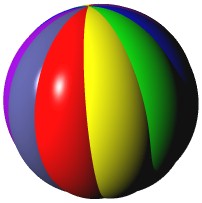

Welcome to Dolphin Smalltalk for Microsoft Windows 95 and NT. By now, you have probably installed Dolphin onto your computer and are wondering where to go from here. This guide is the place to start.
I know you're probably itching to get going, but I'd just like to take time out to tell you about the structure of this guide and the intended audience for the various parts.
This chapter will get you started with Dolphin and teach you how to interact (safely) with the system. If you have used Smalltalk before, much of this will be familiar to you so you may just need to skim through this section quickly.
The following chapters are a general introduction to the Smalltalk language and, in spirit, are as applicable to any other implementation of Smalltalk as they are to Dolphin. In practice, we'll use a sample application called Playground to illustrate the various topics and currently this is only available in Dolphin Smalltalk.
If you are already familiar with the basic Smalltalk language, you may decide to skip over these chapters.
Note that chapter titles marked in red below are not yet available. Please check back to the web site to see if further chapters have been made available since this version of the Beginner's Guide was released.
Chapter 6: Programming in Smalltalk
Subsequent chapters deal with the drawing of graphics and the creation of user interfaces. The information presented here is unique to Dolphin and is therefore likely to be of interest to all readers.
From this point on there are a number of tutorial sessions available to teach you how to use the Model-View-Presenter framework.
Tutorial 1: Experiments with Simple Windows
Tutorial 2: A Scribble Pad Component
Tutorial 3: Etch-A-Sketch
Tutorial 4: Creating a Personal Money Application